Wine Blend Spotlight: Mettler Ranch GSM
A beautiful blend of three Rhone varietals: Grenache, Syrah, Mourvedre. All three of these varietals trace back to the Mediterranean coast and thrive in the Lodi climate. They blend poetically together, each bringing a different flavor profile. Grenache adds a fresh raspberry flavor. The Syrah brings savory dark fruit flavors and a velvety mouth-feel. Mourvedre adds a nice tannin structure and herbaceous aromas. A delicious wine to try!

You can ferment it a number of ways. You can do what is called a “field blend” and blend everything at crush. Or you ferment each varietal seperately. Either way makes a great wine. It all comes down to the equipment you have and the amount of time you have. If you don’t have a lot of storage vessels then doing a field blend is the way to go.
Field Blend Fermentation:
- Crushing and Fermenting: After harvesting, co-ferment the grapes together in the same fermentation vessel. This means that the Grenache, Syrah, and Mourvèdre grapes are all mixed together from the start. The co-fermentation process allows for the blending of flavors and characteristics at the earliest stage.
- Temperature Control: Control the fermentation temperature carefully, as each grape variety may have different requirements. Find a temperature that works well for all three varieties to ensure proper extraction of flavors and tannins.
- Taste and Adjust: Monitor the fermentation process and taste the wine to assess the development of flavors. Make any necessary adjustments, such as adding yeast or adjusting the temperature, to achieve the desired characteristics.
- Aging: After fermentation, age the wine in suitable containers, such as oak barrels or stainless steel tanks. Aging allows the flavors to meld and develop complexity.
- Bottling: Once the wine has aged to your satisfaction, bottle it. Label the bottles with the vintage and the type of field blend GSM.
- Enjoy: Once the wine has aged to your satisfaction, bottle it. Label the bottles with the vintage and the type of field blend GSM.
Creating a field blend GSM wine is a unique approach that requires careful planning and execution in the vineyard. It can result in a wine with distinctive characteristics that reflect the terroir and the synergy of the three grape varieties grown together.
Fermenting the Grapes Seperately:
- Fermentation: Fermenting each grape variety separately helps control the extraction and balance of flavors. Add yeast to start the fermentation process. Pro Tip: Use different yeasts for each batch and you will create even more complexity!
- Temperature: Monitor and control the fermentation temperature. Grenache, for example, generally benefits from higher fermentation temperatures, while Syrah and Mourvèdre might require lower temperatures to preserve their desired characteristics.
- Taste and Analyze: Taste the wines from each varietal to understand their individual characteristics. Analyze factors such as aroma, flavor, acidity, tannin, and alcohol content.
- Blending Trials: Once each wine has completed fermentation and has been aged to your liking, start experimenting with different blends. This is where the art of blending comes into play. Start with small trial blends and make adjustments to the ratios until you achieve the desired flavor profile and balance.
- Age the Blend: Blend the wines together and allow the blend to age in a suitable container, such as oak barrels or stainless steel tanks. The aging process helps the different components integrate and develop complex flavors. *For more information on againg your wines, check out this blog post
- Regular Tasting: Blend the wines together and allow the blend to age. The aging process helps the different components integrate and develop complex flavors.
- Bottle: Once you’re satisfied with the blend and the wine has aged to your liking, bottle it. Make sure to label the bottles appropriately, indicating the vintage and the blend.
- Enjoy: Allow the bottled wine to rest for a period before opening and enjoying. GSM blends often benefit from some additional bottle aging to reach their full potential.
GSM blends are known for their bold, rich, and complex flavor profiles, often characterized by red fruit, spice, and earthy notes. The proportions of each grape variety in the blend can vary, but Grenache is typically the dominant grape, with Syrah adding structure and Mourvèdre contributing depth and complexity. Experiment with different proportions to create your own unique GSM wine blend.
The Mettler Ranch wine grapes are available for purchase every Fall Season. If you are interested in the Mettler grapes we suggest making a pre-order by mid-August. For more information on the Mettler Ranch click here.
We’re here to help when you need it
Musto Wine Grape offers a variety of products as well as services including testing and support. Email sales@juicegrape.com or call (877) 812 – 1137 to speak with someone who can assist you.
Lodi Rules: Grow great grapes, make delicious wine, leave everything a little better than we found it
“May we farm in a way that meets the needs of today without compromising the ability of future generations to create their livelihoods.” – The LODI RULES motto.
Started in 2005, the LODI RULES certification program is a collective of growers who are focused on all thing’s sustainability. Many of these Lodi Farmers are 4th or 5th generation winegrowers who are focused on farming with the next 100 years in mind. We at Musto Wine Grape, are lucky enough to work with some of these amazing farmers – Mettler Ranch and Costamagna Vineyards. Look for the LODI RULES seal on the wine grape boxes this season.
LODI RULES growers use a unique risk model to quantify the environmental and human impact of all pesticides applied in the vineyard. This model considers the dietary risks to consumers, as well as the acute risk to farm workers; small aquatic invertebrates; birds; and bees; and bees and beneficial insects. The Lodi region has documented a great decline in the use of high-risk pesticides since 1992, thanks to sustainability adaption by farmers.
LODI RULES Sustainability Standards Overview:
- Water: They carefully manage the quality and efficiency of their water, appreciating every drop
- Soil: They do their part to make sure that soil – the foundation of the vineyard- thrives for generations to come
- Community: They support the neighborhoods and schools around the farms
- Ecosystem: They encourage biodiversity and act as stewards of the land
- Pest Management: They us an integrated approach to pest management, which includes protecting beneficial insects and minimizing risks to birds, bees, water, and people
- People: They make sure that their vineyards are a safe and rewarding place to work
- Quality: They design farming practices to improve wine grape quality
- Generational Farming: They farm with the next 100 years in mind
How is certified sustainable farming different than organic and biodynamic?
- Organic and biodynamic farmers follow a set of practices related to the environment. Certified sustainable farming includes practices related to the environment, the people, and the business.
LODI RULES has over 100 sustainable practices included in its certification; with over 28,776 acres certified.
Over 150 wines bear the LR seal (Mettler Ranch & Costamagna being some of them!) A wine must contain 85% certified grapes to be the LR seal.
“Sustainability means leaving everything – people, places, etc.- as good as better than how we found it” – Kevin Philips, Michael David Winery
“When you drink a glass of wine made from LODI RULES certified grapes, you are supporting a farmer, a vintner, and an entire agricultural community that embraces their responsibility to care for the environment and the people”
This is a certification I think we can all get behind. Musto Wine Grape is grateful to be bringing in these grapes this season. If you are interested in grapes from the LODI RULES program, please give us a call at 877-812-1137 to pre-order. We are looking forward to assisting with your winemaking this fall!
Grapes Available from LODI RULES Certified Vineyards:
Mettler Ranch:
- Barbera
- Cabernet Sauvignon
- Grenache
- Merlot
- Pinot Grigio
- Pinotage
- Petite Sirah
- Rousanne
- Sangivoese
- Syrah
- Viognier
- Zinfandel
Costamagna Vineyards:
- Old Vine Primitivo
- Cabernet
- Merlot
- Sangiovese
- Barbera
- Aglianico
- Montelpulciano
- Mourvedre
- Nero D’Avola
- Sagrantino
Cheers,
Christina Musto-Quick
Wine Grape Spotlight: Mettler Ranch Zinfandel
Wine Grape Spotlight: Mettler Ranch Zinfandel
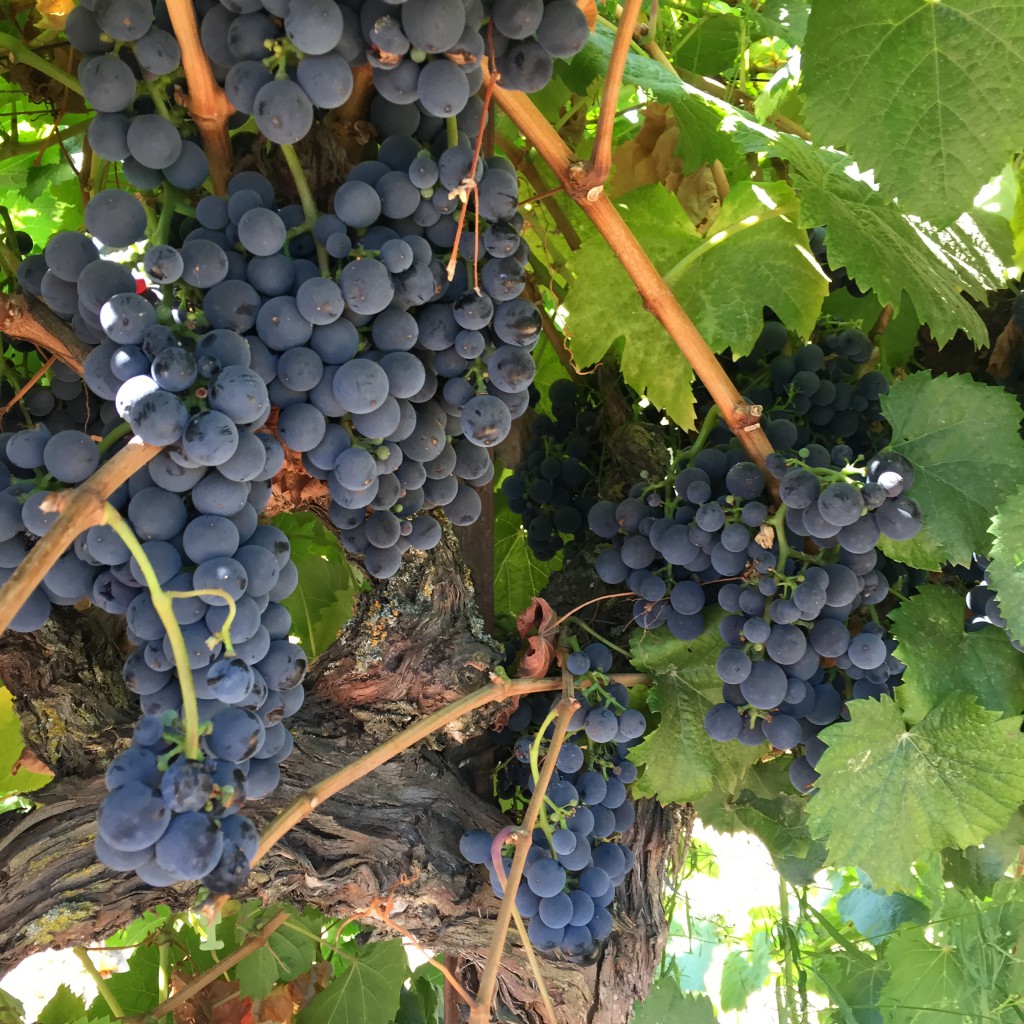
When making Mettler Ranch Zinfandel you can create a wine with earthy and smoky aromas. Along with a complex medley of flavors including plum, blackberry jam, tobacco, anise, and sweet oak. The sturdy but softly integrated tannins yield to subtle oak notes (if you make an oak addition) as the wine lingers on the palate. These grapes create a wine full of Zinfandel personality! Winemaker Adam Mettler suggests some light French oak to add a little extra complexity.
If you can hold off drinking your wine right away and lay it down for 1-2 years it will only gain more of that zesty, delicious personality. If you’re interested in trying out a different Zin this year, Mettler Ranch is a great choice. Email sales@juicegrape.com or call the office at 877-812-1137 for more details on how to reserve these grapes.
The Mettler Family has been farming wine grapes since the 1800’s. Recognized in the Agricultural Hall of Fame, they are 8th generation grape growers in Lodi, CA. With over 800 acres farmed in Lodi county, some vineyards being upwards of 100 years old, these vines are meticulously managed and maintained. All of their vineyards are LODI RULES certified and some are Certified Organic through the CCOF (California Certified Organic Farmers).
Lodi has a classic Mediterranean climate with warm, dry summers and cool, moist winters. The dry warm summer days allow Lodi grapes to develop full, ripe fruit flavors while the distinctive breezes maintain the natural acidity for structure and complexity in finished wines.
The Mettler Zinfandel is sourced from their vineyards by the Mokelumne River, referred to as “Old Lodi.” The soil is sandy and this sub appellation is known for being an epicenter for Old Vine Zinfandel. The vines are 50 years old, sustainably farmed, and certified through LODI RULES.
Making Mettler Ranch Zinfandel (5-6 gallons):
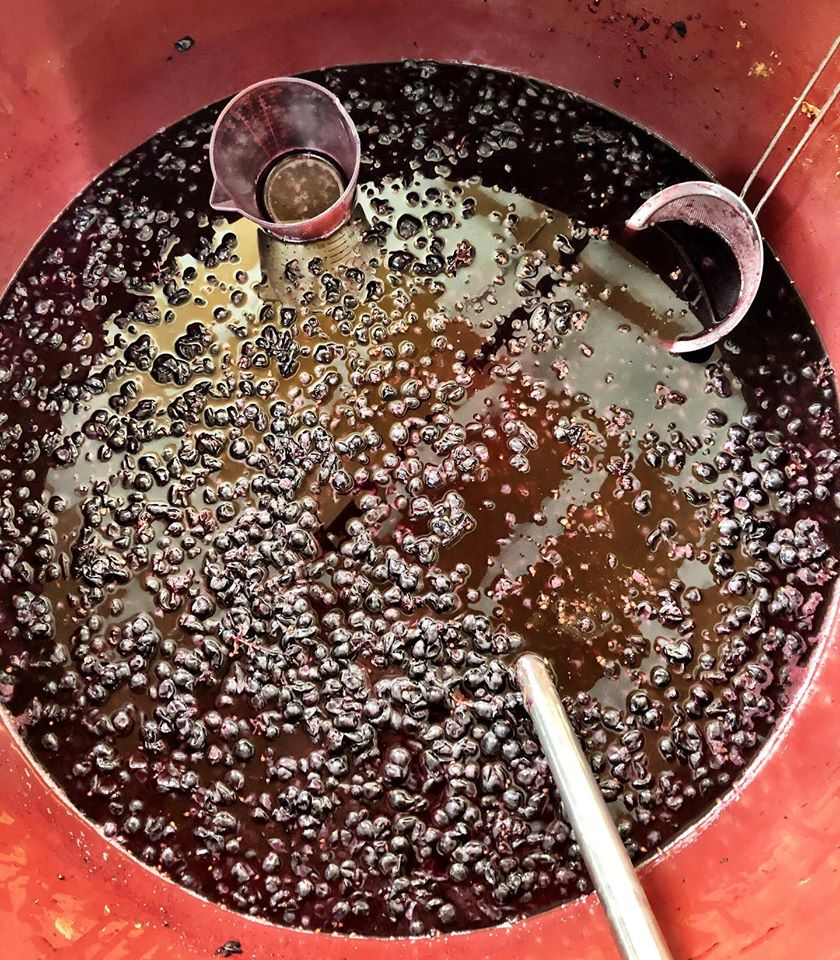
Ingredients:
- 2-3 cases (36lbs) of Mettler Ranch Zinfandel grapes
- 1.6 gms of Potassium Metabisulfite
- 3mL of Color Pro
- 1 – 6gal package of Go-Ferm
- 1 – 6gal package of chosen yeast (see yeast suggestions below)
- 1 – 6gal package of Fermaid K
- 1 – 6gal package of Fermaid-O
- 1 – 6gal package of Malolactic Bacteria
- Optional Additives:
- 1 – 6gal package of Tannin FT Rouge
- 1 – 6gal package of Opti-Red
- 1 – 6gal package of Booster Rouge
- .9oz of French Oak Dust
Yeast Suggestions:
Equipment:
- 1- 6 gallon carboy
- 1 – 5 gallon carboy
- 1- 50LTR fermentation pail w/lid
- 1- Crusher Destemmer or utilize Musto’s Crush/Destemm service
- 1- Press
- 2 – Airlocks
- 2- Drilled Bungs to fit Carboys (#7)
- B-Brite
- Potassium Metabisulfite
- Racking equipment
- Hydrometer
- Thermometer
- Ability to test for Total Acidity (TA), pH, and MLF
- Must punch down tool or stainless steel spoon
Winemaking Steps:
- Sanitize and Crush and Destem – Inspect your grapes. Crush and destem into clean and sanitized food grade 50LTR fermenting tub. Always allow an extra 20% of volume for fermentation purposes as the wine will “expand” throughout fermentation. Always rinse your fermentation vessel with a sanitizing strength potassium metabisulfite solution (2oz/gallon or 3tbsp/gallon). Make sure that the sanitizing solution touches all the surfaces of the fermentation vessel and that the vessel is completely emptied out of all sanitizing solution after. Shake free any drops as best you can from the fermentation vessel. Having remaining sulfite liquid in the vessel will prohibit fermentation. Do not rinse the sanitizer off with water after sanitizing as that will reintroduce bacteria to the environment.
- Once all of the grapes are crushed, try to accurately measure your quantity of must. Add ¼ tsp of potassium metabisulfite for every 5 gallons of must that you have. Mix up the must thoroughly.
- ALWAYS record the additions you make to your grape must!
- Wait for 6-8 hours after the sulfite addition and then add color pro to the must. Always mix it with water to create a 10% solution (if you use 5mls of enzyme, mix it with 45mls of water). The water allows it to better circulate throughout the must. Allow the pectic enzyme to work for 12 hours before yeast set.
- Twenty four hours after crushing the grapes, mix the container thoroughly and take and record your measurements. Measure Brix, pH, and TA. If you need to adjust your must at all, this is the time to do it. Ideally your Brix should be between 23-28 degrees, the pH between 3.4-3.7, and the TA between 6-7g/L. Your initial Brix reading, multiplied by .55, will give you a close estimate of your ending alcohol by volume percentage.
- If you would like to use fermentation tannins (FT Rouge, oak dust) or fermentation nutrients such as Opti-Red, add them after measurements and adjustments have been made. Mix any of these ingredients in thoroughly.
- After measurements have been taken and any adjustments have been made, it is time to set yeast if you are using a cultured yeast strain. Follow the yeast set directions on the packet explicitly.
- After you get to temperature and add your yeast, you may cover the vessel lightly with an old sheet or towel or place the lid gently on top of the bucket.
- Obtain a must punch tool, a long stainless steel spoon, or your bare hands, and sanitize your tool or hands with sulfite sanitizer. This is what you will use to “punch down” or mix up the must three times a day. Try to mix everything very well, pushing all of the skins back down to the bottom, getting them very wet, and bringing up the piqued from the bottom. This should be done as often as possible, preferably three times a day. [Before work (7am), after work(5pm), and before bed (10pm)] When punching down every evening, take a sample of the liquid and using your hydrometer, track the Brix depletion. You should notice a drop in Brix daily. Always record your additions to your must, your brix depletion, and punch downs.
- If you are using additional yeast nutrients to assist in fermentation you will add them after fermentation has started. Fermaid O is added at the beginning of fermentation (1 day after yeast set) and Fermaid K will be added at 1/3 depletion of the Brix (2/3 of the beginning amount of Brix). Follow the directions for the individual yeast nutrient, hydrating with water and mixing thoroughly.
- If you are adding malolactic cultures to your wine, you may also chose to do this at 1/3 Brix depletion. Follow all directions on the bacteria and nutrient packets explicitly.
- Punch down and take Brix measurements daily. When your hydrometer reads 0.90, you have fermented to dryness. At this point your malolactic fermentation may still continue, but the primary alcoholic fermentation is complete. You may now press the wine. Wash the press and sanitize using potassium metabisulfite. Again, make sure the press does not have any excessive puddles or lingering amounts of sanitizing solution remaining. Sanitize the receiving container carboy and any pumps or tubing that you may use. Anything that comes into contact with the wine should be rinsed with sulfite sanitizing solution. Place a screen (also sanitized) inside of the press to hold back any extra skins or seeds from getting through. Start scooping up the must and placing it in the press. Some of the liquid will immediately flow through, this is the “free run”. When the press is full, slowly begin pressing. Do not try and press every last drop out of the must as this can lead to seed cracking and bitterness in the wine. Fill each container to within ½” of the top and secure a bung and airlock in place. Malolactic fermentation will exude a small amount of carbon dioxide and there will be trapped gas within the wine that will need to escape the container.
- Allow the wine to sit for 2-3 weeks. You can conduct malolactic chromatography or bring a sample to a winemaker at Musto Wine Grape for analysis to ensure that your secondary fermentation is finished. At this point you should see a nice thick layer of lees in the bottom of the carboy. You will want to place the full vessel onto an elevated surface such as a table and place the new, sanitized, empty vessel on the floor below. Using a sanitized siphon, rack the wine into the new carboy. You may have space at the top which will need to be “topped off” with more wine. You can either use wine from another container, or finished wine to do this. It is very important that there is less than a 1/2” of headspace in each container. At this point you should also add 1/4tsp of potassium metabisulfite per 5 gallons of wine.
- Now it is time to let your wine age. You will need to rack it and add additional SO₂ every 3 months. Make sure you sanitize all equipment and containers when racking and keep them topped off within ½”. Come visit Musto Wine Grape for bottling advice and supplies.
For more winemaking details check out the posts below:
- Adjusting your grape must
- Racking your wine
- Post fermentation tips
- Finning agents and why they help
- Aging your wine
- Finishing your wine
Awards won by Mettler 2017 Lodi “Epicenter” Old Vine Zinfandel:

- 93 Points, Best of Class & Gold Medal – 2019 Los Angeles Wine Competition
- 91 Points – Wine Enthusiast Magazine (February 2020)
- 91 Points & Gold Medal – 2019 Sunset Int’l Wine Competition
- 91 Points – 2019 California State Fair
- Gold Medal – 2018 San Francisco International Wine Competition
If you are interested in purchasing wine grapes or winemaking juices this fall please email sales@juicegrape.com or call 877-812-1137 for pricing and information. We are looking forward to speaking with you about your 2020 vintage!
Mettler Ranch – Musto’s Newest Vineyard in Lodi, CA
The Mettler Ranch
Musto Wine Grape is excited to announce their newest vineyard addition, the Mettler Ranch. The Mettler family has been farming wine grapes since the 1770’s in California. They focused their vineyard growing in Lodi in the 1800’s. Their family is now in its eighth generation of wine grape growing, with the 6th and 7th generation both recipients of the Agricultural Hall of Fame. It’s safe to say that vineyard farming is in their blood.
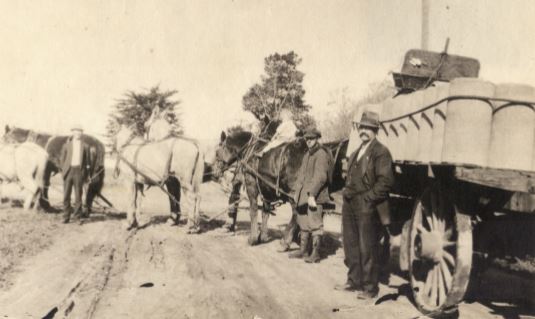
Regardless of their history, the Mettler family is constantly introducing new and progressive practices to create high quality wine grapes. They farm all of their vineyards sustainably (via LODI RULES) and as organically as possible; with certain blocks being certified organic by the CCOF (California Certified Organic Farmers). They use integrated pest management, cover crops, composting; and disease control through trellising, shoot positioning and leaf removal. The Mettler’s believe in farming the land for healthy vines and consistent wine quality.
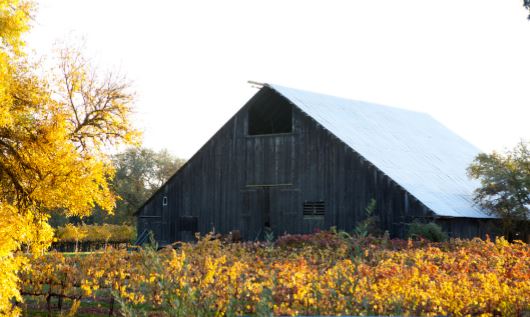
Organic Farming at a Glance:
Soil:
- Building organic matter within the soil is key to organic farming. You must feed the soil in order to feed the plant. The balance of the soil structure is critical not only in organic farming but to the overall health of the vine.
- Cover crops in vineyards are used to fix nitrogen and soil tilth. They create a habitat for beneficial insects and reduce erosion. Cover crops can also be helpful in weed control, and reduces air pollution by keeping dust down in the vineyards
- Use of compost on the vineyards floor if needed.
Disease Control:
- Prevention is key
- Modern trellising, shoot positioning, and leaf removal allow sunlight penetration and air flow into the vine’s canopy, greatly reducing mildew pressure.
Pest Control:
- Organic farmers must encourage a healthy ecosystem; to include and encourage predatory insect species, which eat pests
o By not using pesticides, beneficial insects remain in the vineyards. - Owl boxes placed in vineyards create a natural form of pest control
Weed Control:
- Mechanized in-row cultivator
- Hand hoeing
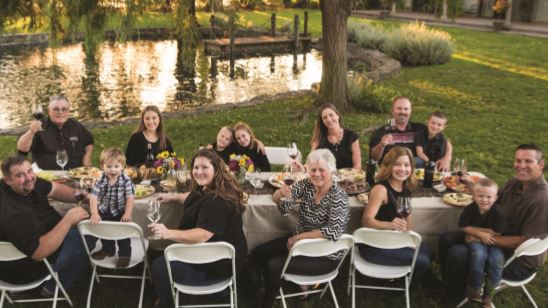
The Mettler family farms over 800 acres in the Lodi Appellation, some of which date back to their family’s original properties which are over 100 years old. In keeping with their progressive nature, they were the first to introduce French clones in the Lodi region. The family is very focused on producing wine grapes that make consistent and richly crafted wines.
PS- you might have noticed Berton Costamagna from Delta Packing (another one of our Lodi wine grape providers) in the Mettler family photo. This is because Berton is married to Kelli Mettler (now Costagmagna). Kelli is head of Wine Sales for her family’s winery. You might have met Kelli and Berton at our last Winemaker Competition Celebration. As a family run business, we at Musto Wine Grape love being able to work with other growing family businesses. If you visit Mettler Vineyards you’ll see their wine dogs and next generation running around in the vineyard, including Berton and Kelli’s son Caden.
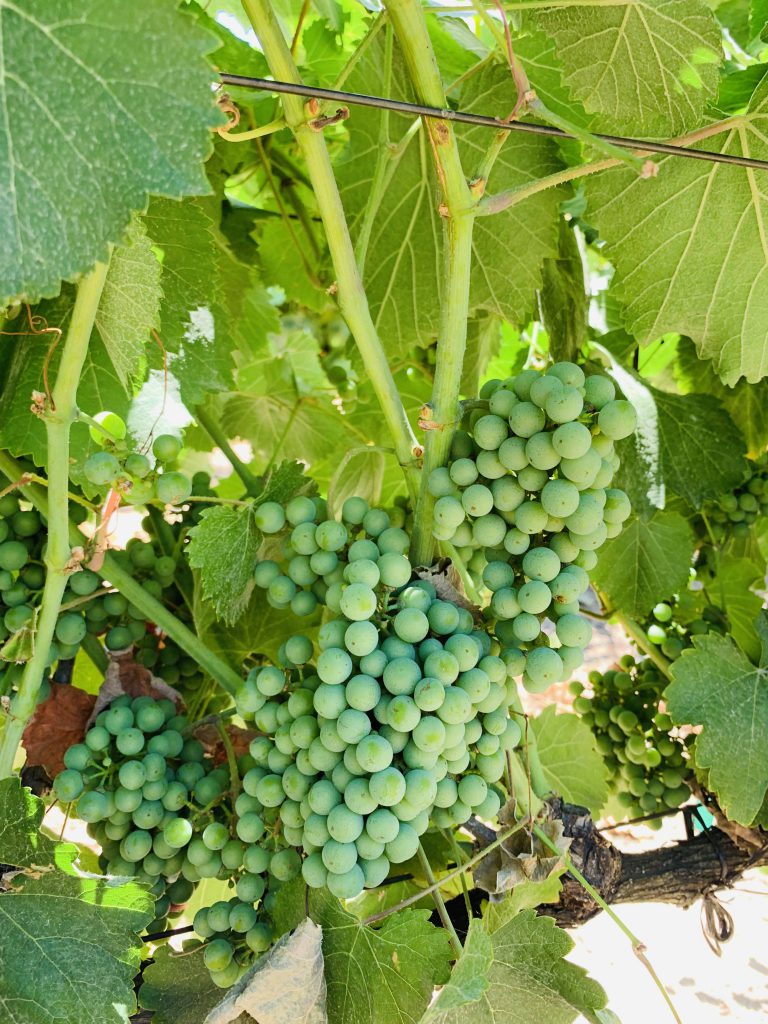
Wine Grape Varieties Available:
- Pinotage
- Grenache Noir
- Merlot
- Petite Sirah
- Syrah
- Cabernet Sauvignon
- Zinfandel
- Sangiovese
*All grape varieties are available in 36lb cases or in frozen must by request
The Mettler Vineyards:
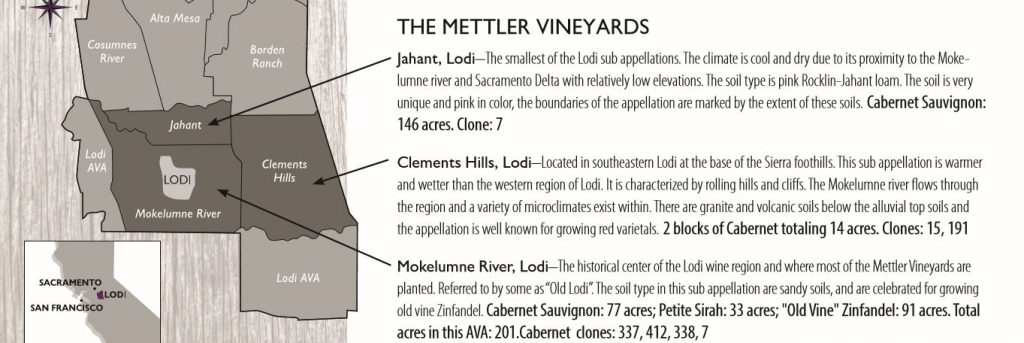
The Mettler Vineyards are located in Lodi’s Mediterranean Climate. Warm, dry summers, and cool moist winters. The dry warm summer days allow Lodi grapes to develop ripe fruit flavors while the distinctive breezes maintain the natural acidity for structure and complexity in the finished wines.
Mettler’s Wines of Distinction:
The Mettler family has their own winery located in Lodi, CA. Their winemaker, Adam Mettler recently won Winemaker of the Year from Wine Enthusiast. He creates award winning wines for many wineries in Lodi, including his family’s winery.
Awards Received:
- Cabernet Sauvignon: Red, velvety and complex with true varietal characteristics
- 92 Points – Wine Enthusiast 2019
- 91 Points – Wine Enthusiast 2020
- Petite Sirah: Deep and layered with concentrate flavors and excellent balance
- 94 Points – Wine Enthusiast 2019
- #33 of the Top 100 Wines of 2019 – Wine Enthusiast
- 92 Points – Wine Enthusiast 2020
- Old Vine Zinfandel: Hearty and full bodied with a genuine “zin” personality
- 91 Points – Wine Enthusiast (Feb. 2020)
- 92 Points – Wine Enthusiast (April 2020)
For more information regarding the Fall Harvest please feel free to contact us at sales@juicegrape.com or give us a call at 877-812-1137. We are looking forward to helping you with your next great wine!
Our Growers and thier wineries are winning awards!
We want to give a BIG Congratulations to our Growers for winning multiple prestigious awards at the San Francisco Chronicle International Wine Competition!!
Our Lodi Growers:
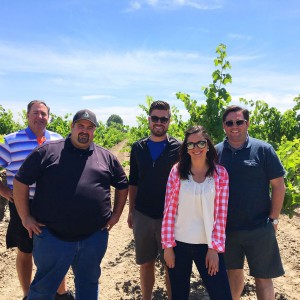
2016 Zinderella Old Vine Zinfandel – GOLD Medal
2017 Albarino from Mettler Ranch – SILVER Medal
2016 Zinfandel from Mettler Ranch – SILVER Medal
2016 Petite Sirah from Mettler Ranch – GOLD Medal
2016 Cabernet from Mettler Ranch – SILVER Medal
Our Suisun Valley, Lanza Musto Vineyards Growers:
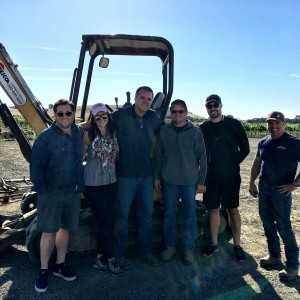
2018 Wooden Valley Sauvignon Blanc – GOLD Medal
2016 Wooden Valley Zinfandel – GOLD Medal
2017 Wooden Valley Malbec – GOLD Medal
2016 Lanza Family Petite Sirah – DOUBLE GOLD Medal
2016 Lanza Family Cabernet – GOLD Medal
Click the link below to see the full list of winners. Great wine starts in the vineyard!
Link: http://winejudging.com/medal-winners/






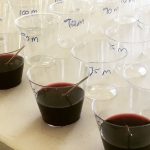
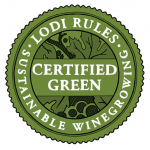
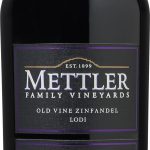

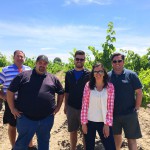
Recent Comments